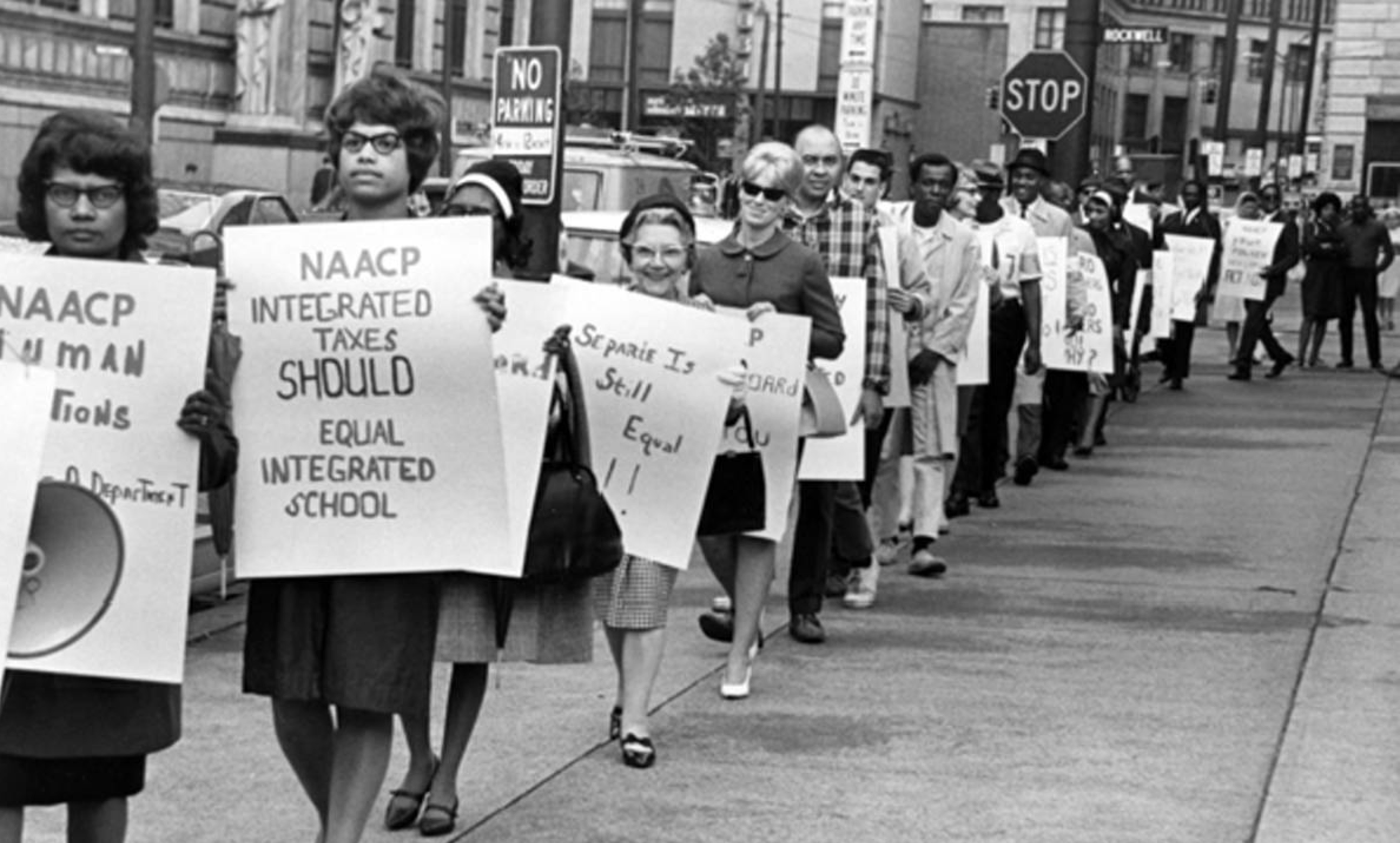The experience of many students in Social Studies classrooms has produced a culture of young people who are not only apprehensive to engage the disciplines (see my Introductory Post), but who also lack the critical and historical thinking skills associated with and taught within them. Many students experience difficulty in engaging course material, especially in history classes, because the information presented to them oftentimes lacks context, continuity or excitement. Teachers also become easily frustrated within these courses as they struggle to balance content with technology or multimedia, trying desperately to prepare their students not only for major assessments, but also critical life situations.
The current Ohio standards for high school American History courses stress teaching methods that make the subject come alive for students. No longer are students expected to simply memorize what they are being told; instead teachers are being asked to give their pupils various opportunities to interact with the events of the past through analysis, questioning, simulation and research. Rather than present a series of events with no apparent connection or context, educators are now expected to teach history as a series of motivations that continuously flow into one another and influence the succeeding events and patterns of behavior (part of the Historical Thinking and Skills aspect of the current standards highlights “multiple causation and long- and short-term relationships with respect to historical events”). (Ohio Department of Education, 2013) With special emphasis on primary sources and multiple accounts and perspectives, students are now encouraged to interact with American History by analyzing the cause-and-effect aspect of the events of the nation’s past. The Ohio standards for American History education now integrate all five aspects of Daisy Martin’s definition of historical thinking (multiple accounts and perspectives, analysis of primary sources, sourcing, understanding historical context, and claim-evidence connection), and give students the opportunity to become historically-literate individuals through hands-on, research- and project-based learning.
According to “Teachers’ Use of Primary Sources” (a research brief provided by the scholars at teachinghistory.org), current teaching practices are more actively integrating primary source documents “to enrich a textbook account or to help students focus on essential facts and concepts.” While textbooks are still esteemed with vital importance within classrooms, teachers are now recognizing that student analysis and critical thinking is developed more thoroughly when the primary textbook narrative is combined with documents that relate to the time period of event being discussed. In Reading Like a Historian, Sam Wineburg states that “research has shown over and over that a key to adolescent literacy is exposing students to a rich diet of texts that mix genre and style ‘at a variety of difficulty levels and on a variety of topics.’…students…need to be exposed to historical questions and the documents that address them.” (Wineburg, 2013)
Contemporary teaching practices and state standards are also beginning to emphasize the idea of “researching backwards” in which students are provided with the end result and must use the information given in their textbook and primary source documents to understand what previous actions led to the event. (Doran, 2012) Having students individually research information that may be unclear to them is an important aspect of this activity as they learn to seek out answers for themselves and critically sift through various sources of information to come to a correct conclusion. Current research also shows that allowing students to recreate events of the past helps them to better analyze and remember the concepts or events being taught within the particular course (for more information, check out the Reacting to the Past website, developed by Barnard College). Using costumes, props and primary source documents to reenact historical events is not only fun and engaging for the students involved, but also provides them with an opportunity to understand the motivations of the individuals who actually lived through the event, thus giving the student a whole new perspective on history. Finally, integrating technology at every available opportunity allows students to interact with digital primary sources and databases, all while furthering their understanding of devices they may not normally have access to.
Connecting contemporary standards for American History with new, innovative teaching methods has not only revitalized and brought life to the content being taught, but has also stimulated student growth in a whole new way. Students have been given opportunities to develop the same passion for the material as their teachers, while also developing critical skills that will aid them in other areas of life. While these teaching methods and skills are applicable to American History classes, they can also be implemented within other disciplines for the benefit of all students in all courses. As educators commit to better integrating technology within their classrooms, students will also learn how to use such measures not only further their academic careers, but in the job market as well. As teachers continue incorporate multiple accounts into their primary historical narratives, students will learn to analyze various viewpoints and search for context clues in the information they are given within their American History course, in addition to other classes.
Check back soon for resources pertaining to American History education and a conversation with a current American History teacher about how they integrate historical thinking and technology within their classroom!
Works Cited:
Barnard College. Reacting to the Past. https://reacting.barnard.edu/.
Doran, Elizabeth. “Teachers Learn New Techniques for Teaching American History”. Syracuse.com (January 20, 2012). http://www.syracuse.com/news/index.ssf/2012/01/teachers_learn_new_techniques.html.
Martin, Daisy. “What is Historical Thinking?”. Teachinghistory.org (January 10, 2011). http://teachinghistory.org/nhec-blog/24434.
Ohio Department of Education. “High School American History Model”. October 2013. http://education.ohio.gov/Topics/Ohio-s-New-Learning-Standards/Social-Studies.
“Teachers’ Use of Primary Sources”. Teachinghistory.org. http://teachinghistory.org/issues-and-research/research-brief/23783.
Wineburg, Sam, Daisy Martin and Chauncey Monte-Sano. Reading Like A Historian: Teaching Literacy in Middle and High School History Classrooms. New York City: Teachers College Press, 2012.

